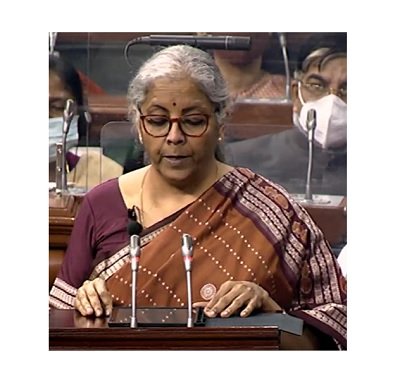Abhay Dandwate, Chief Risk Officer, National Bulk Handling Corporation (NBHC) gives his opinion on the budget on how it will help India achieve its growth target
Budget 2022-23 is a comprehensive capital expenditure led growth-orientated allocation, relying on the strategy to pump prime the economy through public investment, which will lead to crowding-in of private investment, eventually setting in motion the virtuous cycle of increase in employment rate and spurt in demand leading to increased consumption.
The outlay for capital expenditure in the budget is stepped up sharply by 35.4 per cent from Rs 5.54 lakh crore in the current year to Rs 7.50 lakh crore in 2022-23, while the effective capital expenditure of the central government is estimated at Rs 10.68 lakh crore in 2022-23, which will be about 4.1 per cent of GDP.
The revised estimated growth of tax revenues of 14 per cent against the budget estimates is a reflection of effective tax collection, notwithstanding to fact that the economy is also grappling with the brunt of covid, which is attributable to an increase in GST, corporate tax, income tax Collection. Tax to GDP ratio is estimated at 10.70 per cent as against 9.8 per cent earlier which is indicative of the endeavour of the government to maintain a tight lid on the expenditure; however still, it is lesser as compared to vibrant nations which are having Tax to GDP ratio in the range of 15-16 per cent.
The fiscal deficit for the full year is now revised to 6.9 per cent as against 6.8 per cent of the budgetary estimate which appears to be more authentic and realisable. However, on the disinvestment front, the government has lagged as the actual disinvestment against the BE of Rs 175000 crore is very meagre and considering the current pace of disinvestment, the revised estimate has been lowered to Rs 78000 crore.
However, the government has accomplished the daunting task of sale of Air India and there is a likelihood that the IPO of LIC will sail through in the current fiscal. The disinvestment target of Rs 65000 crore pegged for FY 22-23, appears to be more modest and realistic. The real challenge for the government will now be to fund this huge capital expenditure which will predominantly come from the proceeds of asset monetisation and raising debt from the bond market.
MSME is the cornerstone of the economy with regards to the generation of employment which was impacted most owing to the covid wave. Credit Guarantee Trust for Micro and Small Enterprises (CGTMSE) scheme is proposed to be revamped. All these measures will give much-needed succour to this fragile sector.
Agriculture has shown its resilience despite facing the brunt of the covid wave and has shown consistent growth in the last two years by registering a growth of 3.6 per cent and 3.9 per cent in FY 20-21 and FY21-22 (Est) respectively, thus playing an instrumental role in driving the overall GDP @ 9.2 per cent in FY 21-22.
Agri sector budget allocation is focussed on the tech-driven approach to augment agriculture production. Kisan Drones’ will be promoted for crop assessment, spraying of insecticides, digitisation of land records which would give a better estimate of the crop, reduce wastage of pesticides, and ease of doing farming which would eventually lead to higher productivity for small and marginal farmers.
Announcement of government to start a scheme to lower the dependence on imports of oil and focus to increase domestic production of oilseed is the clear signal that the government is committed to reducing its dependence on edible oil import which has been one of the flashpoints of retail inflation as well one of the major factors of foreign exchange outgo which has already crossed 1 lakh crore mark.
Promotion of chemical free natural farming is another agenda on the radar of the Government with an initial focus on 5 kilometre corridor along the river Ganga.
Delivery of digital and Hi-Tech services to farmers in PPP mode and launching of the fund with blended capital to finance agriculture start-ups with NABARD is renewed emphasis of the IT-driven approach towards agriculture. In a bid to ensure stricter adherence on fuel bending, Government has proposed a levy of Rs 2 per litre on unblended fuel exemplify the government of its priority which will force the oil companies to meet the blending target and also give encouragement to the sugar industry to install distillery, which in turn supplement their income to meet the cost of production of sugar.
To achieve the ambitious target 280 GM of solar installed capacity by 2030 has increased allocation under Production Linked subsidy of Rs 19500 cr to make it to Rs 24000 coupled with a hike in the customs duty on imported solar modules and solar cells which is intended to boost the domestic production of solar panels but in the shorter run, same may have its dampening effect on the per-unit solar energy cost as the cost of imported solar modules and the solar cell is lower than the domestic solar components.
Introduction of Central Bank Digital Currency (CBDC) will give a big boost to digital economy, using block chain and other technologies. Digital currency may also lead to a more efficient and cheaper currency management system. However details of it will be known when RBI unveils the contours of the CBDC.
Overall budget is a forward-looking budget and is the step in the right direction to propel India’s growth.
Abhay Dandwate, Chief Risk Officer, National Bulk



